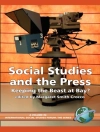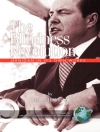This book critically examines multiple ways in which cultural diversity is represented and handled in a variety of contexts, from the artistic to the scientific, from the political to the theatrical, in media, fashion and everyday life, today as well as in the past. By drawing from the observation that specific socio-cultural features are made relevant to create asymmetries and hierarchies between individuals, groups and cultural resources, the volume questions, on the one hand, contingent processes of regulation, standardization, and homogenization of diversity. It points at contradictory processes of in- and exclusion related to the construction of differences between the Self and the Other in processes of doing culture. On the other hand, it recognizes and emphasizes the fluidity of cultural entanglements by adopting a transcultural perspective, which unifies the variety of the topics and of the contexts covered by the chapters, as well as their inter- and transdisciplinarity. While processes such as globalization, decolonization, migration, and mediatization have contributed to place diversity at the centre-stage of both scholarly and non-scholarly debates, this book invites to re-think norms, practices and negotiations of diversity and otherness through a variety of narrations, standardizations, imaginations, and negotiations. By emphasizing the contrast between emancipatory vs. standardizing approaches to diversity and otherness it also invites to “transculturalize” the study and the politics of culture.
Über den Autor
Lisa Gaupp, Leuphana University of Lüneburg, Germany; Giulia Pelillo-Hestermeyer, University of Heidelberg, Germany












